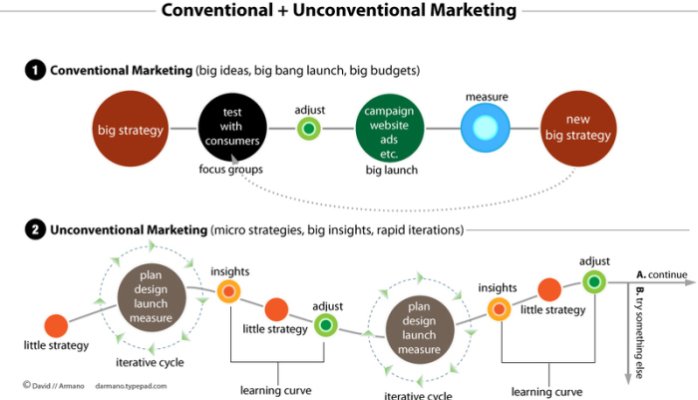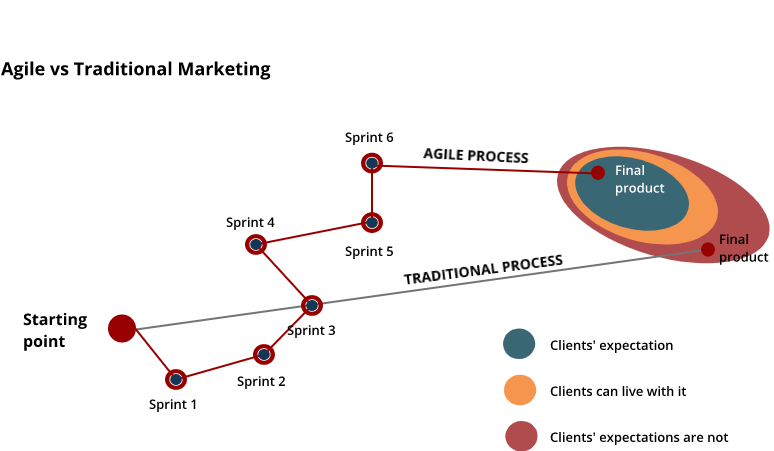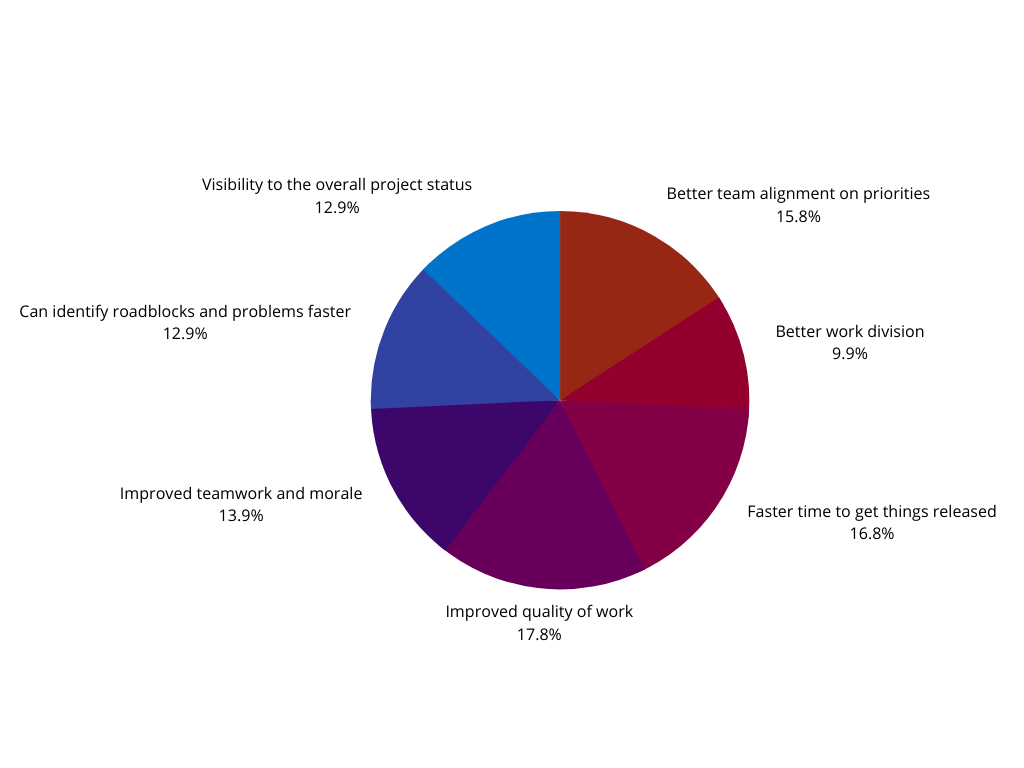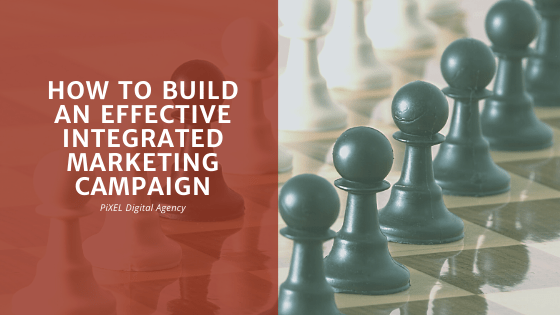Growth and business revenue are topics on everyone’s minds nowadays. But let me ask you one a question. How do you know you have achieved growth if you haven’t defined KPIs? How do you know the ROI of your marketing campaigns if you haven’t tracked your marketing efforts and analyzed them?
Well, this is something we are going to tackle in this article. We are going to explain:
- What is an integrated marketing campaign?
- What isn’t an integrated marketing campaign?
- Why is an integrated marketing strategy effective?
- Why organizations struggle to integrated marketing activities
- 6 benefits of integrating marketing campaings
What is an integrated marketing campaign?
Integrated marketing is not new. It has been here for a while and it has started to gain importance in the past few years. The main reasons being because of the advancements in marketing technology, the proliferation of marketing channels and industry-specific challenges. This has led to consumers being bombarded with a sea of content and messages. Just to give you an example, in 2000, Microsoft conducted a study to measure how long people can focus on one thing for a specific amount of time. They discovered that the attention span was 12 seconds. About 15 years later the attention span of the average person dropped to 8 seconds. The trend is that this will continue decreasing. In this new scenario is now more difficult to stand out and cut through the noise and information overload. This requires businesses to create a strong strategy and consistent messaging across the user journey. According to Hubspot, which is a reference in the marketing world:“Integrated marketing is the process of arranging your different marketing channels to work in tandem to promote your products or services, typically through a strategic campaign. Integrated marketing also works to align the primary brand message that’s being delivered through your marketing channels and assets. ”No w imagine you are scrolling through Instagram and you discover a new brand. You check their profile and decide you want to make a purchase. When you land on their website their brand looks different, their message is different as well. And just when you thought you were having a great discount or price it turns out is not available anymore. Well, that’s just marketing gone wrong. This is the perfect scenario in which integrated marketing campaigns fit in. The ultimate goal is to create a consistent experience across all your marketing channel and deliver results for your brand. But it is easier to understand integrated marketing campaigns if we compare them with a cooking process. When you start cooking you don’t put all the ingredients at once and find out at the end of the meal came out correctly. What you do instead is test each ingredient for quality. In fact, you will remove some items that didn’t meet your standards. You even test each dish at various points in time to see if it is coming out, right. You might add some salt, pepper, spices if something seems off. So at different points in time, you are going to test the meal to make sure is coming out the way you wanted to.

But what has this to do with integrated marketing campaigns?
So building an integrated marketing campaign is somewhat similar. In terms of you will have a goal in mind which is similar to the dish we mentioned before. As you plan your strategy and execute it you will add more ingredients meaning social media platforms and activities around that goal. As you test and see which channels and strategies work better you find the optimal combination that helps you achieve your goal faster and with fewer resources.What isn’t an integrated marketing campaign?
Let’s take a closer look at what integrated marketing campaigns are not:- Duplication of efforts that lead to content waste
- Role confusion of who is doing what and lack of accountability
- When business goals are not aligned with marketing investments
- Your technology does not support your marketing efforts
- Better content strategy
- Better team alignment on tasks
- Aligned business and marketing goals
- Use of the right marketing technology
Why is an integrated marketing strategy effective?
To be able to make decisions that take into account the entire customer lifetime and start implementing integrated marketing campaigns we need to understand the process behind it. Is about adopting an agile approach to market your organization. Before marketing activities would be organized by channels, now is time to adopt a more agile marketing approach. With this agile approach, you run faster experiments with less budget. As you can see here the traditional campaigns are long term, require larger budgets and less room for adjustments. With an agile approach, this doesn’t happen, you have a more flexible marketing approach and allows you to test quickly your assumptions and adjust your campaigns for a better result.
The result is easy to see since traditional marketing allows you to just reach in the wrong way your target market. With the agile process, you run sprints adding improvement to each sprint that lead you closer to your client, at the right time and with the right offer.

Why organizations are struggling to integrate marketing?
Despite the endless possibilities, integrated marketing offers some barriers to make many businesses not adopting integrated marketing campaigns:
- Lack of resources and expertise. The integration of marketing channels takes a lot of time to implement. At the same time, it requires a certain degree of expertise. This means as an organization you need to shift your focus from marketing channels as a single entity each one because they will work now as one entity.
- Data gathering. These campaigns are data-driven to make sure they are making an impact on your business. One of IMC’s goals is to help you use marketing resources to work more efficiently. So make sure you are tracking your efforts across all channels weekly. When you arrive at this stage you know who your audience is and what their preferences are. This means you can start crafting a message that could motivate people to check your brand.
- Analyzing and measuring data. IMC requires measuring success and data points across many channels. You need to work with a team and agree on what success looks like before you start. Review the results often and make course corrections as necessary. This will help you truly optimize your marketing initiatives and get more out of your investments.
- Company culture. All this wouldn.t be possible without a culture that supports collaboration, efficient levels of communication and to certain level creativity to launch a campaign.
6 benefits of integrating marketing campaings
- Shoppers who buy from a business both in-store and online have a 30% higher lifetime value than those who shop only using one channel.
- Companies with omnichannel customer engagement strategies retain on average 89% of their customers.l
- Customer satisfaction is 24 times higher in companies who run omnichannel strategies.l
- Companies that use multichannel marketing experience 3x higher effectiveness rates than those that use non-integrated campaigns.
- Customers on the receiving end of omnichannel marketing campaigns spend 10% more than those who aren’t.
- Companies with extremely strong omnichannel customer engagement see a 9.5% year-over-year increase in annual revenue.

[et_social_follow icon_style=”flip” icon_shape=”circle” icons_location=”top” col_number=”auto” custom_colors=”true” bg_color=”#962715″ bg_color_hover=”#b53117″ icon_color=”#ffffff” icon_color_hover=”#ffffff” outer_color=”dark”]




